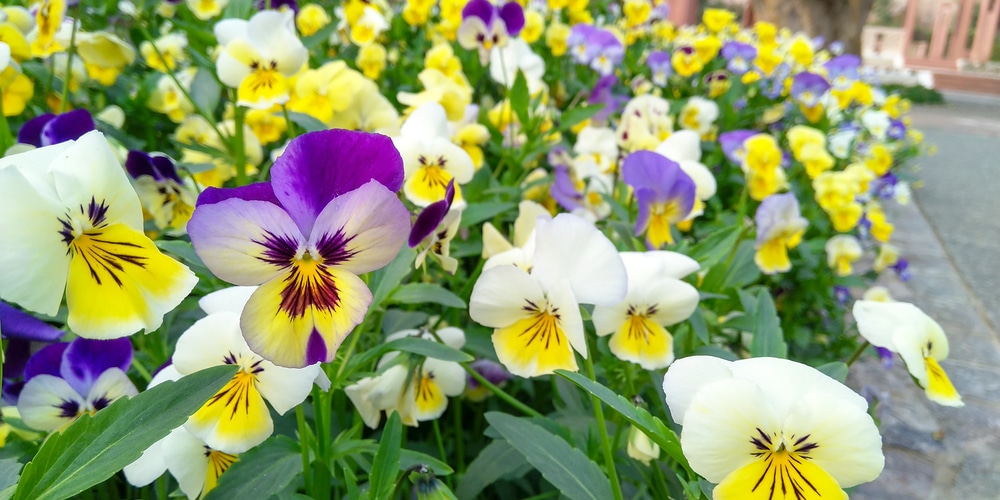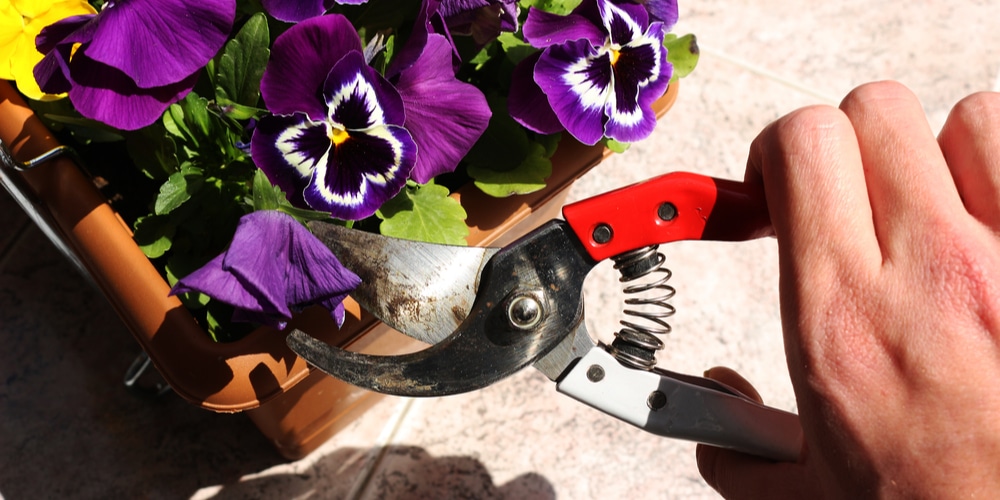Pansies are the ideal plants to add to your garden if you are looking for ways to make it more colorful and vibrant. There are several varieties of pansies, giving you plenty of options to choose from to decorate your yard.
So, you won’t have issues finding a species suited to your taste and needs. And the best part about them is that, under the ideal conditions, they aren’t particularly challenging to grow.
Of course, that doesn’t mean that you won’t have to pay some effort into growing pansies. For instance, a crucial step into successfully growing healthy pansies is pruning.
If you want to learn more about how to deadhead pansies, keep reading. You’ll find all you need to know on the subject (and more) in this essential guide!
Why Should You Prune Your Pansies?

Pruning isn’t anything out of this world. However, many people find it annoying, meaning they don’t commit to regularly following this practice. With pansies, which you might grow as annuals or perennials (depending on where you live), pruning might make a considerable difference.
For instance, it will boost bloom production and make your plants less susceptible to pests, diseases, and other conditions. And the best part is that it won’t take much time.
Removing spent flowers will allow your plant to concentrate its energies on creating new flowers instead of developing seeds. So, if you like to extend the flowering season with your pansies, don’t forget to deadhead them.
That is true even if you are growing these plants as perennials. Indeed, your plants will look better if you prune them regularly, and they will also produce more flowers than if you don’t.
How to Deadhead Pansies
Pruning pansies isn’t a challenging task, but that doesn’t mean you can take an old flower off and feel ready to go. Instead, look for wilted blooms and pinch them (or clip them) with your fingers.
Using your hands will allow you to be more precise and know which stem you are grabbing (and eliminate the risk of cutting healthy parts by mistake). Aim above the first leaf under the flower for best results.
You should check your plants every couple of days to get the most out of the process. And you’ll notice that the more you deadhead, the more you’ll have to keep doing (as more flowers will appear). Don’t allow yourself to skip pruning, even for just a few days, as it will result in more wilting.
Keep in mind that, more often than not, as soon as temperatures rise above 70°F, your pansies will stop producing flowers. And none likes to have leggy pansies.
While you can take some measures to protect your plants from the scorching heat, sometimes you’ll have to plant another species instead. Alternatively, you can consider cutting the green foliage down to one-third. Doing so will help keep your plant healthier. Jump to the following section to learn more tips you can follow to grow pansies.
How to Grow Healthy Pansies in Your Garden
If you grow in USDA hardiness zones between 4 and 8, you’ll probably have no issues growing these plants. However, keep in mind that they might not survive through hot summers as they are not very heat tolerant.
But with the proper care, your plants will keep producing blooms from spring to fall. Besides deadheading and pruning your plants, you should also recreate the optimal conditions for their growth in your garden.
To begin with, these plants grow best under full to partial sun. You might have to adjust the choice of your location depending on where you live. As you might expect, if you live in a hot region, the partial sun will reduce the problems caused by heat.
Additionally, don’t forget to select a well-draining substrate for your flowers. Indeed, these plants prefer constant moisture but won’t tolerate soggy soil: the right soil conditions will help you minimize any issues with extra water.
Consider adding a thick layer of mulch around your plants to increase retention and improve drainage.
Following a regular watering schedule will help grow healthy pansies. However, avoid overdoing it: always feel the soil with your fingers before adding extra moisture.
Plus, pansies will benefit from nutrients in the ground. Consider adding fertilizer, but not too much. Also, avoid products high in nitrogen, as it will make your plants leggy and hinder their abilities to produce flowers.
Related Article: Can I Plant Pansies in the Fall?

